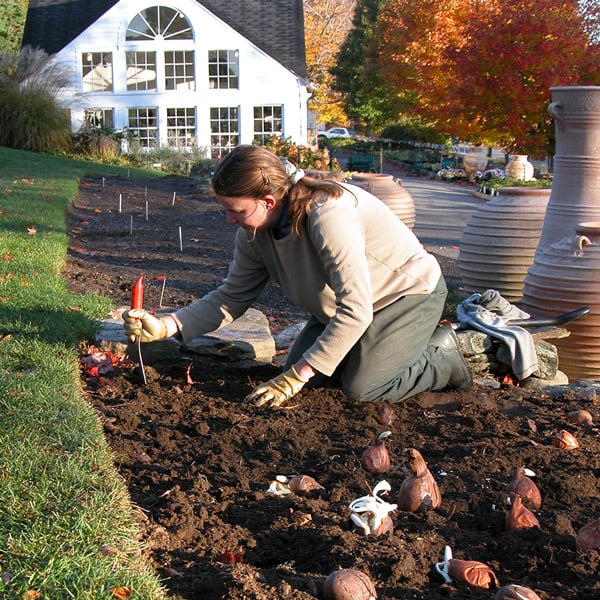Why Plant in Fall?

Along with spring, fall is an ideal time of year to install new plants (and move older ones) in the garden. Here are some of the advantages* of planting in fall:
- Cooler days and nights allow plants to settle in with limited stress. Cool temperatures mean soil retains more moisture to keep roots happy. Plants also transpire less (i.e., lose less water through their leaves) when the air is cooler.
- The soil is still warm enough for roots to establish. To give plants enough time to grow healthy root systems before winter, we recommend planting at least 6 weeks before the ground freezes hard. (You can contact your local Cooperative Extension Service to find out your estimated fall freeze date. Follow this link for a directory of institutions involved in the Cooperative Extension program.)
- Getting root systems started in the fall gives plants a head start come spring. You will be able to enjoy watching your plants put on a full season of growth the following year.
- The likelihood of rain in fall can mean less frequent watering. That said, it is important to keep an eye on your plants and not let them dry out if temperatures rise or there is a lot of wind.
- Some plants need to be planted in fall. This provides them with the cold period they need in order to bloom in the spring. Examples include spring-flowering bulbs such as Crocus, Daffodils, Muscari, Hyacinths, and Tulips.
- Fall is a great time to address issues in your garden. Most top-growth is still visible, so it is easier to observe where improvements can be made. Perhaps a perennial is getting too big and needs to be divided, or maybe there are gaps among plants that could be filled with spring-flowering bulbs.
*Note: While fall is a great time to plant almost anything, planting conifers or broad-leaved evergreens is not recommended at this time. Since these plants have leaves that persist through winter, they are susceptible to drying out and therefore require more roots to keep them thriving. Planting them earlier, whether in spring or summer, allows them more time to establish stronger root systems.


